 Tom Reynolds currently teaches English at Keith Country Day School in Rockford, Illinois. For the previous 28 years, he taught English at Hononegah High School in Rockton, Illinois, and served as the English Department Coordinator. Tom continues to work for Hononegah as a reading across the curriculum consultant.
Tom Reynolds currently teaches English at Keith Country Day School in Rockford, Illinois. For the previous 28 years, he taught English at Hononegah High School in Rockton, Illinois, and served as the English Department Coordinator. Tom continues to work for Hononegah as a reading across the curriculum consultant.
Tom began his career in 1984 as a graduate teaching assistant at Loyola University in Chicago. He went on to teach Journalism and English for eight years at a Chicago-area Catholic high school where he also began teaching AP Literature & Composition. He has taught high school students of all grade and ability levels for 37 years and was a recipient of the Illinois State Board of Education’s “Those Who Excel” Award for Educational Excellence.
In addition to being a high school teacher, Tom has worked as an AP Reader, Coordinator for Gifted Education at Hononegah, internal reviewer for the Advanced Ed Accreditation Organization, and adjunct instructor for Northern Illinois University and Morton College in Cicero, Illinois.
Tom continues to act as an AP Mentor, an AP Reader, and an AP Consultant for the Midwest and International Regions of the College Board.
In his own words, “I enjoy helping my colleagues no matter where I go. I am always willing to share my experiences and resources with anyone who might benefit from them.”
Tom Reynolds is teaching one workshop at Augsburg this summer. See our registration site with the button below.

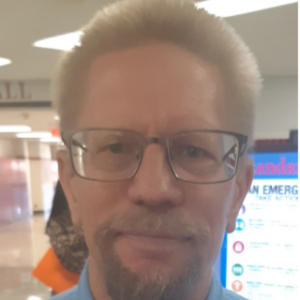 I live in McAllen, TX with my wife Mayra (23 years). We have two children, Angela (21 years) is a junior at the University of Texas in Austin, and Jacob (17 years) is a junior in high school.
I live in McAllen, TX with my wife Mayra (23 years). We have two children, Angela (21 years) is a junior at the University of Texas in Austin, and Jacob (17 years) is a junior in high school.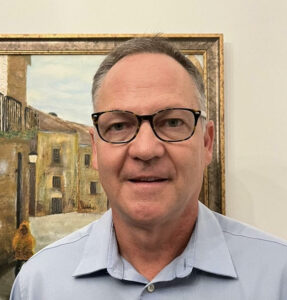 Tim Zitur has been a high school math teacher and soccer coach for 32 years. He has taught AP® Calculus for 29 years; 3 years in Minnesota at the School of Environmental Studies and 26 years at the Singapore American School, one of the largest AP international schools in the world. Presently, Zitur teaches AP Calculus BC, Multi-variable Calculus and Linear Algebra. He has been an AP reader or a table leader since 2004, as well as an AP College Board consultant workshop presenter since 2007. Zitur has taught AP® Calculus with the “flipped” or “blended” classroom approach for the last 13 years. He likes teaching through applications of math whenever possible. Zitur has his M.Ed. in Mathematics Education from the University of Minnesota and his B.S. in Mathematics from St. John’s University (MN). He is married and has three children.
Tim Zitur has been a high school math teacher and soccer coach for 32 years. He has taught AP® Calculus for 29 years; 3 years in Minnesota at the School of Environmental Studies and 26 years at the Singapore American School, one of the largest AP international schools in the world. Presently, Zitur teaches AP Calculus BC, Multi-variable Calculus and Linear Algebra. He has been an AP reader or a table leader since 2004, as well as an AP College Board consultant workshop presenter since 2007. Zitur has taught AP® Calculus with the “flipped” or “blended” classroom approach for the last 13 years. He likes teaching through applications of math whenever possible. Zitur has his M.Ed. in Mathematics Education from the University of Minnesota and his B.S. in Mathematics from St. John’s University (MN). He is married and has three children.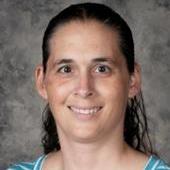 Shaina Eagleson is an esteemed educator with a Master of Education and an impressive career spanning 16 years in the field of teaching. As a National Board Certified Teacher, she has exemplified her commitment to excellence in education. With a strong passion for chemistry, Shaina has spent a decade teaching AP Chemistry, earning recognition as an AP Chemistry Reader for five consecutive years.
Shaina Eagleson is an esteemed educator with a Master of Education and an impressive career spanning 16 years in the field of teaching. As a National Board Certified Teacher, she has exemplified her commitment to excellence in education. With a strong passion for chemistry, Shaina has spent a decade teaching AP Chemistry, earning recognition as an AP Chemistry Reader for five consecutive years.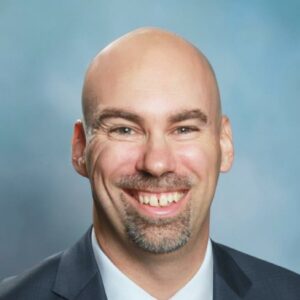 I have taught AP World since 2012. I have been part of the AP reading since 2016, serving as a reader, Table Leader, and Sample Selector. I have worked as a Workshop Consultant since 2018. I have worked on the College Board’s Project Based Learning (PBL) pilot program for the last two years.
I have taught AP World since 2012. I have been part of the AP reading since 2016, serving as a reader, Table Leader, and Sample Selector. I have worked as a Workshop Consultant since 2018. I have worked on the College Board’s Project Based Learning (PBL) pilot program for the last two years.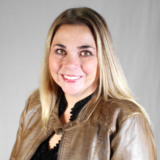 Proud professional educator, Sarah M. Johnson, teaches Mathematics & Statistics at Grand Blanc High School in Grand Blanc, Michigan. She has been teaching AP Statistics for more than 17 years and currently serves as an AP Consultant for the Midwest Region of the College Board. Sarah has also worked as an AP Statistics Table Leader, AP Rubric Team Member, AP Reader, AP Multiple Choice Item Writer, a National Delegate to the Academic Assembly of the College Board, College Board Diversity Initiatives Advisory Panel Member, NCTM Proposal Reviewer, and as both a Consultant & Mentor with the National Mathematics & Science Initiative. Once upon a time, Sarah raised her hand in a department meeting and asked the question: “Why don’t we have this AP Stats class I heard about?” This is the last time she has raised her hand in a meeting to date. Since that day, she has been educating the masses about fighting our two enemies: bias & variability, and maintaining focus on the #1 job of any statistician– translating statistics into English for common folk. Sarah uses simulation-based activities to ensure her students are good consumers of data (and also to keep them from sleeping in class). Her passion is helping teachers love statistics as much as she does, and she especially enjoys learning from the experiences of workshop participants! Sarah is married to her marine engineer / program manager husband, and they are attempting to herd cats—err raise 4 beautiful daughters (a.k.a. “Those Johnson Girls” ages 24, 16, 12, and 7).
Proud professional educator, Sarah M. Johnson, teaches Mathematics & Statistics at Grand Blanc High School in Grand Blanc, Michigan. She has been teaching AP Statistics for more than 17 years and currently serves as an AP Consultant for the Midwest Region of the College Board. Sarah has also worked as an AP Statistics Table Leader, AP Rubric Team Member, AP Reader, AP Multiple Choice Item Writer, a National Delegate to the Academic Assembly of the College Board, College Board Diversity Initiatives Advisory Panel Member, NCTM Proposal Reviewer, and as both a Consultant & Mentor with the National Mathematics & Science Initiative. Once upon a time, Sarah raised her hand in a department meeting and asked the question: “Why don’t we have this AP Stats class I heard about?” This is the last time she has raised her hand in a meeting to date. Since that day, she has been educating the masses about fighting our two enemies: bias & variability, and maintaining focus on the #1 job of any statistician– translating statistics into English for common folk. Sarah uses simulation-based activities to ensure her students are good consumers of data (and also to keep them from sleeping in class). Her passion is helping teachers love statistics as much as she does, and she especially enjoys learning from the experiences of workshop participants! Sarah is married to her marine engineer / program manager husband, and they are attempting to herd cats—err raise 4 beautiful daughters (a.k.a. “Those Johnson Girls” ages 24, 16, 12, and 7). Robert Getka grew up on a dairy farm in southern Wisconsin, the second of nine children. He graduated from Big Foot High School and then received his diploma from Rockford College in 1986 with a dual degree in math and computer science, along with minors in education and business administration. Bob completed his Masters degree in Instructional Technologies at the University of South Florida, where he was also a member of Phi Kappa Phi. Bob now teaches the AP Computer Science course at Parker High School and is in his 30+ year of teaching AP Computer Science A and has been an AP grader for 15+ years. Bob also teaches the AP CS Principles course as well as the AB Data Structures course. Bob and his wife Susan have three children.
Robert Getka grew up on a dairy farm in southern Wisconsin, the second of nine children. He graduated from Big Foot High School and then received his diploma from Rockford College in 1986 with a dual degree in math and computer science, along with minors in education and business administration. Bob completed his Masters degree in Instructional Technologies at the University of South Florida, where he was also a member of Phi Kappa Phi. Bob now teaches the AP Computer Science course at Parker High School and is in his 30+ year of teaching AP Computer Science A and has been an AP grader for 15+ years. Bob also teaches the AP CS Principles course as well as the AB Data Structures course. Bob and his wife Susan have three children. Mihoko Yamamura is a dedicated Japanese language educator based in Texas. With a Bachelor’s degree in Education from a university in Japan, she initially shared her passion for teaching as a high school teacher in her home country. After moving to Texas, Mihoko acquired her teaching certification and began educating students in high schools and community colleges, imparting her knowledge of the Japanese language. She also concurrently began teaching at supplementary schools, further expanding her teaching repertoire to a diverse range of learners.
Mihoko Yamamura is a dedicated Japanese language educator based in Texas. With a Bachelor’s degree in Education from a university in Japan, she initially shared her passion for teaching as a high school teacher in her home country. After moving to Texas, Mihoko acquired her teaching certification and began educating students in high schools and community colleges, imparting her knowledge of the Japanese language. She also concurrently began teaching at supplementary schools, further expanding her teaching repertoire to a diverse range of learners.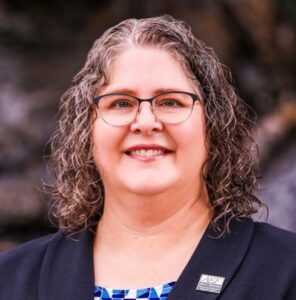 Michelle Strand has taught science for 31 years in Minnesota, Nebraska and North Dakota. She has 26 years of experience teaching college-level introductory physics (including AP Physics B, AP Physics C, AP Physics 1, AP Physics 2 and Introductory algebra-based physics at a community college).
Michelle Strand has taught science for 31 years in Minnesota, Nebraska and North Dakota. She has 26 years of experience teaching college-level introductory physics (including AP Physics B, AP Physics C, AP Physics 1, AP Physics 2 and Introductory algebra-based physics at a community college).